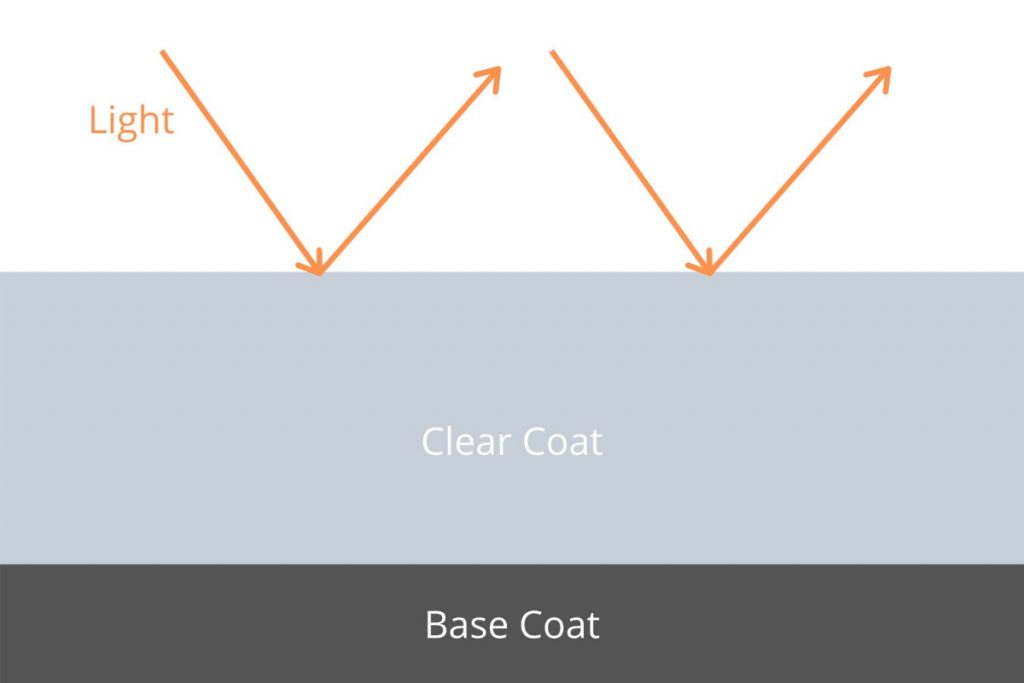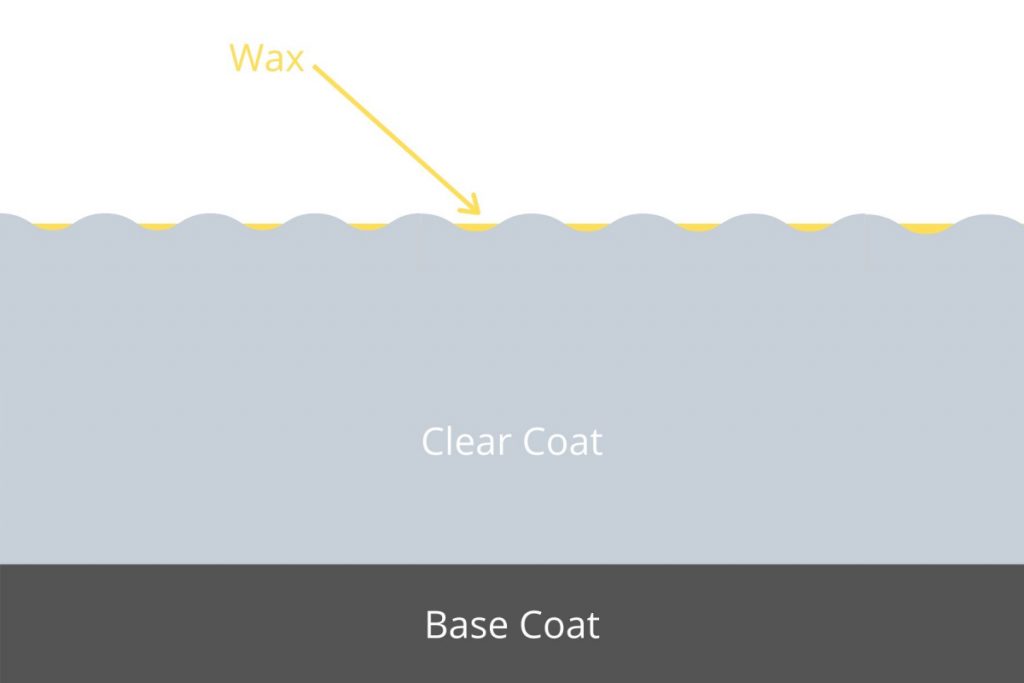If you’ve recently bought a matte car for the first time, then you’re probably wondering how to actually take car of the paintwork and keep it clean. It’s really important to take the right approach when maintaining matte paint to preserve the finish.
So in this article I’ll be taking you through everything you need to know about caring for a matte car including how to wash it, and correct and protect the paint to keep it looking brand new. So let’s get started.
The Quick Answer
A matte car should be washed every 2-3 weeks and protected using a paint sealant or ceramic coating specifically designed for matte paint as required. The paint should also be decontaminated using a matte paint cleanser and iron fallout remover every 6-12 months. Matte cars cannot be clayed or polished.
Caring for matte paint shouldn’t be any more difficult than caring for shiny paint, but there are a few rules to keep in mind.
- Only use car shampoo that is designed for matte cars or does not contain any gloss-enhancing agents or waxes. Never use dish soap, bleach or any other household products.
- Never use a sponge or brush to wash the car, instead use a microfiber wash mitt.
- Only use paint sealants or ceramic coatings designed for matte paint. Traditional waxes, sealants and coatings will alter the appearance of the paint.
- Never polish or compound matte paint.
- Never use a clay bar on matte paint, instead chemically decontaminate the paint.
Looking for some of the best car care products on the market? Make sure you check out my recommended products page for all my current top picks.
Understanding Matte Paint
Before we jump into exactly how to look after matte paint, I think it’s important to go through the basics and understand the structure of the finish and how it compares to glossy paintwork.
Matte paint is imperfect. This means that the surface of the paint isn’t flat, but instead textured. Of course, you can’t actually see the texturing, but what you can see, is what happens when light reflects off it.
With gloss finishes, the light reflects evenly off the flat surface to produce a shiny finish. But with matte paint, the light reflects unevenly, so it doesn’t look shiny. Check out these diagrams to demonstrate.


This difference in structure complete alters how you maintain the finish including the products you use. So now let’s take a look at how to wash a matte car properly to preserve the paintwork.
Washing a Matte Car
Matte cars should be washed with a microfiber wash mitt and wax-free shampoo that does not contain any gloss-enhancing agents. Thoroughly prewashing using a pressure washer and prewash chemical or snow foam is recommended. Once the car has been washed, dry it using a microfiber towel.
If you want your matte car to looking brand new, then you’ll need to make sure you wash it regularly to keep the paintwork looking clean and fresh.
The wash process doesn’t differ too much when washing a matte car compared to washing a glossy car. The key with both of them, is to avoid friction as much as possible to prevent scratches.
This of course is important on glossy finishes, because scratches dull the paintwork. But it’s arguably more important with matte finishes because scratches are far more difficult to remove and deal with.
So how do you wash a car without causing scratches? Well, you need to prevent friction on the paintwork.
Unfortunately, your car’s paint is incredibly delicate, and friction is it’s worst enemy because it can easily cause permanent scratches.
Avoiding Scratches
There are two main ways that this friction can occur:
- When dust, dirt and grit are dragged along the paint during the wash process.
- By using aggressive and slightly abrasive cleaning tools like sponges and brushes.
Luckily, it’s quite easy to actually avoid this friction and keep the wash process safe and scratch-free.
There are three things to keep in mind when washing.
- Use non-abrasive tools e.g. microfiber wash mitts to clean the paint instead of sponges and brushes.
- Remove as much dirt as possible before using a wash mitt (known as the pre-wash stage).
- Lubricate the panels when you’re touching them with the wash mitt.
I’ve actually written an entire article on safely washing your vehicle that’ll take you through the best equipment, tips and techniques to use.
Check out this complete guide to washing your car without causing scratches.
But here are some of the biggest mistakes to avoid when washing your matte car.
- Don’t scrub the paintwork, instead use plenty of lubrication and wipe gentle to remove the dirt.
- Never use dish washing soap or bleach as it dries the paint and leads to cracking and fading over time.
- Never drop your wash mitt on the floor.
- Avoid using a brush or sponge at all costs as they are the biggest culprits of scratches.
Using the Right Products
So how does the wash process differ when cleaning a matte car, compared to a gloss finish. There’s really only one thing to actually change.
Do not use any car shampoo that contains wax on a matte car. Instead, use a car shampoo that doesn’t contain any wax or ingredients designed to add gloss, or use a shampoo specifically designed for matte cars.
Remember what we said at the start about the textured finish that matte paint has? Well if you use a shampoo designed to add gloss, then you will change the way that light reflects on the paint. The same goes for any other products you’re using like snow foams or drying aids.
Although they won’t make the paint look shiny, it can reduce the matte-look. Take a look at this diagram to demonstrate.

If you’re looking for a good shampoo with great cleaning power, that doesn’t contain any wax or gloss-enhancing agents, then check out the Garage Therapy Car Shampoo. It works on all vehicle finishes and is very concentrated so offers excellent value for money.
It’s the car shampoo that I’ve been using for the last year and I highly recommend it to people who want a fuss-free great quality car shampoo.
Common Questions
Here are a few frequently asked questions you may still have about washing your matte car.
How often should I wash a matte car?
Matte cars should be washed every 1-4 weeks, depending on the climate, how often the car is driven and how it is stored. A matte car that is driven every day in the rain and stored outside will need washing weekly. Whereas a vehicle stored in a garage, driven weekly in good conditions may only need washing monthly.
Can a matte car be taken through an automatic car wash?
Matte cars should not be taken through automatic car washes because they are very likely to cause scratches which will damage the appearance of the vehicle. They should only be hand washed using a microfiber wash mitt or lamb’s wool mitt, never a sponge or brush.
Paint Protection
If you want to preserve the finish of your car’s matte paint, then you’ll need to protect it in some way.
There are three traditional paint protection options: waxes, sealants and ceramic coatings. They are applied to protect the vehicle’s clear coat from things like UV damage, corrosion, dirt and other contaminants. This has the overall effect of protecting the base coat underneath, which provides the colour of the car.
If you do not protect your vehicle’s paint, then the clear coat will eventually degrade and the base coat (colour) will be unprotected so the car’s colour will quickly fade.
There are several things that a paint protection product will offer you:
- Protects from UV rays and fading
- Stops contaminants (bird mess, tar, iron fallout, tree sap etc.) from bonding to the paintwork.
- Leaves a water-repellent coating and helps to prevent water spots.
- Repels dirt and helps to keep the car cleaner and makes the wash process easier.
Clear coats can last for around 2 years without washing or protecting before they completely degrade. However, with proper care, they can last for decades.
Traditional waxes, sealants or ceramic coatings designed for use on glossy vehicles should not be used on matte cars because they will alter the finish. Instead, only paint protection products specifically designed for matte cars should be applied.
Again, going back to what we said earlier about products designed for shiny cars. They contain “fillers” and oils which intend to add gloss and shine to the paint. So when applied to a matte car, they will detract from the finish.
Luckily, there are many waxes, sealants and coatings designed specifically for use on matte cars. Instead of filling in the textured finish on the matte paint, they will not change the properties of the paintwork to produce a shiny appearance.
Check out these diagrams to demonstrate.


Now there can be little bit of confusion when using the terms “wax” and “sealant”. They both aim to protect the paint, but have different ingredients. Waxes are natural, and sealants are synthetic.
Waxes contain natural waxes, primarily Carnauba, which provides gloss. So technically, you can’t apply a “wax” to a matte car. And even products which are called “matte waxes” are technically just matte sealants, because matte waxes don’t contain any of these natural waxes and oils.
However, most manufacturers still use the word “wax” when describing what is actually a sealant. Just something to be aware of.
So really, you don’t have to make the choice between a wax and sealant like you would if you were looking after a shiny finish. Instead, you only have to make the choice between using a sealant or ceramic coating.
Sealant (matte wax) vs Ceramic Coating
So what are the differences between sealants and ceramic coatings? And which is best for you. Here’s the bottom line.
Ceramic coatings are more durable and offer stronger protection but are more difficult to apply. Sealants are cheaper and easier to apply but do not last as long on the paint.
Take a look at this article I’ve written that compares ceramic coatings vs sealants so you can decide which is the best for you.
Here’s a quick table to summarise the differences between ceramic coatings and sealants.
| Feature | Best Option |
| Durability | Ceramic coatings |
| Protection | Ceramic coatings |
| Ease of Application | Paint sealants |
| Cost | Paint sealants |
Applying Paint Protection
Preparing the paintwork before applying a paint protection is very important, particularly if you’re applying a ceramic coating. Sealants and coatings need to bond to the paintwork in order to get maximum durability and the best finish possible.
Ceramic coatings are harder to apply because the prep process is much more crucial and if done incorrectly can cause issues with the finish that can be difficult to rectify without professional help. For example, streaks and spots that can’t be removed after the coating has “cured”.
If you’ve never applied a ceramic coating before, I would definitely not recommend trying for the first time on a matte car. The only really effective way to remove a coating if you mess up the application is to polish it, and this is only possible on a glossy finish, not a matte one.
Don’t risk applying a ceramic coating on a matte car unless you’re 100% confident that you know what you’re doing. Instead, you can take it to a professional detailer who will apply the coating correctly.
Cleansing the Paint
The most important thing when applying a coating or sealant, is to ensure the paint is completely clean and bare beforehand. This will make the finish look much more professional and also dramatically extend the durability.
You can clean the paint by using a paintwork cleanser. But again, you need to use a paint cleanser specifically designed for matte cars, because most paint cleansers add gloss.
It’s also important to decontaminate the paintwork, but again this is different when working with a matte car compared to a shiny vehicle.

Decontamination
To keep the paintwork completely clean, you’ll need to decontaminate it. Over time, “contaminants” can bond to your vehicle’s clear coat. These contaminants include:
- Tree sap
- Iron fallout
- Bird mess
- Water spots
- Bugs
- Tar
These contaminants can easily stick to the paintwork, and are difficult to remove during the normal wash process. They can be prevented to some extent by applying a paint protection product, and washing frequently, but they will still build up.

It’s important that they are removed periodically, not only to enhance the overall look of the paint, but also to protect it. These contaminants are harsh on the paint and can actually corrode it if they are left to sit for too long.
Traditionally, on shiny cars, you’d use an iron fallout remover and tar remover spray, and then use a clay bar to remove any remaining contaminants to leave a completely smooth clear coat behind.
However, it’s not that simple with matte paintwork.
Do Not Use Clay on Matte Paint
Clay bars, mitts and cloths should not be used on matte paint because they are abrasive and will alter the structure of the paint and the matte finish. Instead, matte paint should be chemically decontaminated using iron fallout removers, tar removers and matte paint cleansers.
There are two types of decontamination: physical and chemical. Physical decontamination involves using clay to remove bound contaminants abrasively. Chemical decontamination solutions dissolve the contaminants without any contact.
Chemical decontamination is safe on matte paint, physical (clay) is not.
So instead of using clay to decontaminate your paintwork, you should use the following products:
- Iron fallout removers
- Tar removers
- Decontamination shampoos for matte cars
- Matte paint cleansers
Luckily, it’s possible to keep the paint contaminant-free by using these products which don’t involve actually touching the finish.
How Often Should You Decontaminate?
The frequency at which you should decontaminate your vehicle depends on how often you drive it, the climate, and if its stored inside or outside. Cars stored outside and driven daily should be decontaminated around twice per year.
Paint Correction and Scratch Removal
Perhaps the biggest difference between caring for matte paint and shiny paint, is how you tackle scratches and imperfections in the clear coat.
First, let’s talk about the different types of scratches. There are three main types of scratches:
- Clear coat scratches
- Base coat scratches
- Primer scratches
Your car’s paint consists of several layers as shown below.

Of course, clear coat scratches are the mildest, followed by base coat scratches and finally primer scratches.
Clear coat scratches are often seen on shiny cars and look like cobwebs or swirls, and they can be polished out. This flattens the surface by removing a layer of clear coat so light reflects evenly again to make the paint look glossier.


However, it’s more complicated with matte paint.
Matte paint should not be polished because it has a textured finish which gives it a matte-look. Polishing flattens the surface creating a shiny effect. So effectively, if you polish matte paint, the surface will start to look shinier.
I’ve written a full article explaining this so head over to my post on why you should never polish a matte car to learn more.
So what do you do with clear coat scratches on a matte car?
Luckily, clear coat scratches are very difficult to see on a matte car because the surface is already imperfect, that’s what gives it a matte effect. So you probably won’t even notice them.
Okay, so what about base coat and primer scratches? Well, these are more difficult to tackle.
Even if the paint was glossy, you wouldn’t be able to polish them out because they are too deep. Instead, you have two options.
- Take the car to a professional to get the panel resprayed
- Touch up the scratch using paint yourself
Of course, taking your car to a pro is the best way to remove a scratch, although it can be very expensive. The DIY option is cheaper, but risky and you can end up making it look a lot worse. If you do go with the DIY option, make sure you purchase the paint from the car dealership so you get an exact colour match.
Frequently Asked Questions
Now we’ve been thorough the steps to caring for a matte finish, let’s go through some of the most frequently asked questions that you may still be wondering.
Is matte paint hard to maintain?
Caring for matte paint is no more difficult than caring for a glossy finish. However, it does require products specifically designed for matte paint as traditional waxes and shampoos will alter the appearance of the finish.
Does matte paint scratch easily?
Matte paint does not scratch any more easily than glossy paint. Clear coat scratches are also less noticeable on matte paint because it is already imperfect. However, care should still be taken whilst washing to ensure the finish is not scratches.
How do you care for matte alloys?
Matte alloys should be washed frequently using a car shampoo designed for matte paint and an iron fallout remover. They should also be protected using a matte sealant to help keep the finish cleaner and protect the alloys from corrosion.
Thanks for reading! I hope you’ve found this article useful. Don’t forget to check out the rest of the website to learn more about car detailing.

